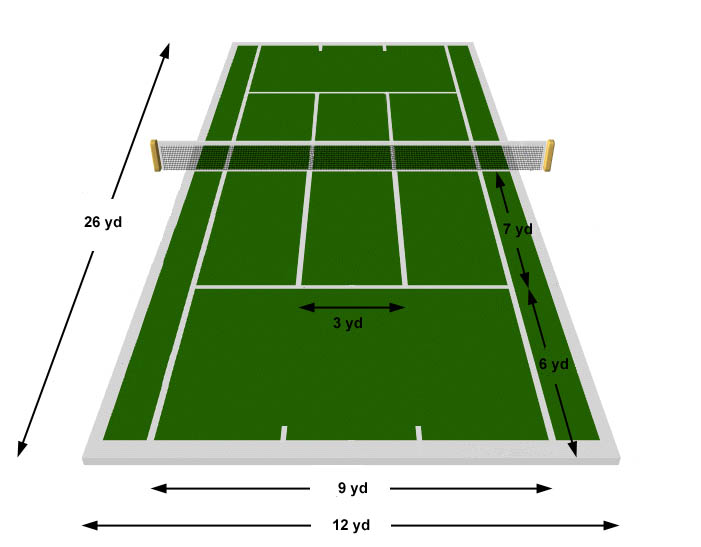Of course, I also tested my ideas in practice. Here's my old description:
Or
metric
I have marked the service court in two diffrent ways: using small pieces of tennis balls (6 is enough in testing purpose) and with so-called painter's tape. Notice that if you have an ordinary tennis racket (27 in) you can measure 3 yds easily. 3yds is 4xyour_racket. Perhaps the service court looks at first very/too? narrow, but the present service court is exactly only 2 "rackets" broader.
It really is obvious that the significance of the serve diminishes on all the levels of tennis. Getting into the second service means also more difficulties for me as for everybody than the present system. Therefore the player must serve with care the first serve and not to try to get aces at least every time (on my level of course "almost aces"). For the same reason there are probably fewer double faults although the service box is smaller!
I even believe that aces would get back their old glory because it would be much more risky stroke than now because it is more difficult and because the returner can attack quite effectively in the case of the 2nd serve.
And, Good Luck on the Court! But be careful with your serves at least if your opponent is a good returner, otherwise he/she will punish....


